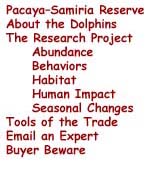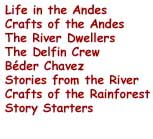|
Saturday, August 14, 1999
A Day in Iquitos
This morning we said good-bye to Terry, Marty, Pat, Lilia,
Sally, Bill, Tamara and all our new Peruvian friends. We all promised
to keep in touch. Lilia and Tamara were flying home to the United States.
Everyone else is going to spend a few more days further down the Amazon.
We are staying the night in Iquitos and then flying on to Lima for a
day before heading to Cuzco.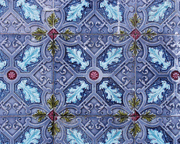
Our hotel in Iquitos was lovely, with a courtyard and a swimming
pool. We dropped off our luggage, took our first fresh water shower
in a week and then got ready to see the sights. Iquitos is a city
of half a million people on the edge of the river. It was the center
of a rubber boom in the late 1800's that drew many people to Peru.
The colonial style buildings from this period are still found throughout
the city. They are easy to spot because they have beautiful tiling
on their exteriors. Iquitos is now the center of a new economic boom
brought on by oil and mineral exploration in the rainforest. It is
a very "bustling" city.
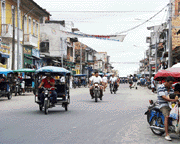 There
are no roads connecting Iquitos to other cities. Everything that isn't
made here must be brought in by boat or airplane. However, there are
roads throughout Iquitos that are filled with motokars. (Yes, this
is the correct spelling.) Motokars are three-wheeled motorcycle taxis.
Riding in one is like being in a pod race in the latest "Star Wars"
movie. We hung on for dear life as we rounded the corners. Often we
closed our eyes as the driver swerved around slower moving motokars,
pedestrians, dogs, buses and trucks. We were happy to get out once
we reached the market. There
are no roads connecting Iquitos to other cities. Everything that isn't
made here must be brought in by boat or airplane. However, there are
roads throughout Iquitos that are filled with motokars. (Yes, this
is the correct spelling.) Motokars are three-wheeled motorcycle taxis.
Riding in one is like being in a pod race in the latest "Star Wars"
movie. We hung on for dear life as we rounded the corners. Often we
closed our eyes as the driver swerved around slower moving motokars,
pedestrians, dogs, buses and trucks. We were happy to get out once
we reached the market.
The Market

Béder and his wife, Lucillia, gave us a tour of the market. The
local people buy everything from batteries to clothes to food there.
While walking through the market, we were bombarded with so many new
sights, sounds and smells that it was a bit overwhelming. The food section
was particularly interesting and very different from our markets in
the United States. There are many different kinds of fish here. While
on the river we saw the holes the "walking" catfish make in the banks
of the river when the river is high. In the market there were baskets
of them available. Here, there is no refrigeration in the market so
the vendors must sell their food fresh each day. That means are there
many live animals for sale. For those of us who haven't grown up on
a farm or ranch, the sight of all the live animals was a bit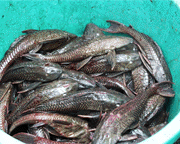
disturbing.
We also saw animals for sale that we knew were endangered and protected
by law. There were many stalls where turtle eggs, turtle parts and
even live turtles were for sale. Tapir, caiman, and peccary were also
available. After spending a week on the river working to protect dolphins
and learning more about the rainforest, it was difficult to see these
other animals for sale. For many people in Iquitos, however, this
is normal. The jungle and the river have always been sources of food.
They have grown up eating these animals. Like people in many parts
of the world, it may be hard for them to understand that some species
of animals in the forest are diminishing and need protection in order
to survive.
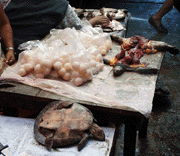
The Cyber Cafe
After our tour of the market we went to one of the Internet
cafes. There are four of them in Iquitos. We were a little surprised
that even in remote Iquitos, people have access to the Internet. We
looked at our website and read our email. It was rewarding to see the
information we have been sending home posted on our site. We expected
to meet four members from the Delfin crew while we were there. They
wanted our help in setting up email accounts, and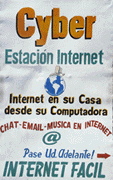 they
wanted to learn more about the Internet. They said that the two things
they needed to learn in order to be successful were English and computers. they
wanted to learn more about the Internet. They said that the two things
they needed to learn in order to be successful were English and computers.
Unfortunately, they had to go out on another trip and couldn't make
it to the café. Béder, who already has an email address,
said he would show them all how to set up accounts when they got back.
We spent our evening getting ready for our early morning flight to
Lima. We had had our clothes laundered earlier in the day. When we
got them back, were very surprised that our white tee shirts -- which
had turned brown form washing them with water straight from the river
-- were actually white again. In our luggage we are still carrying
all the plastic trash from our week on the river. As is the common
practice here, all the trash on the boat went into the river during
the week. We didn't want to put items in the river that were not biodegradable,
so we have been carrying it with us. We plan to throw it all away
once we are in Lima.
|




